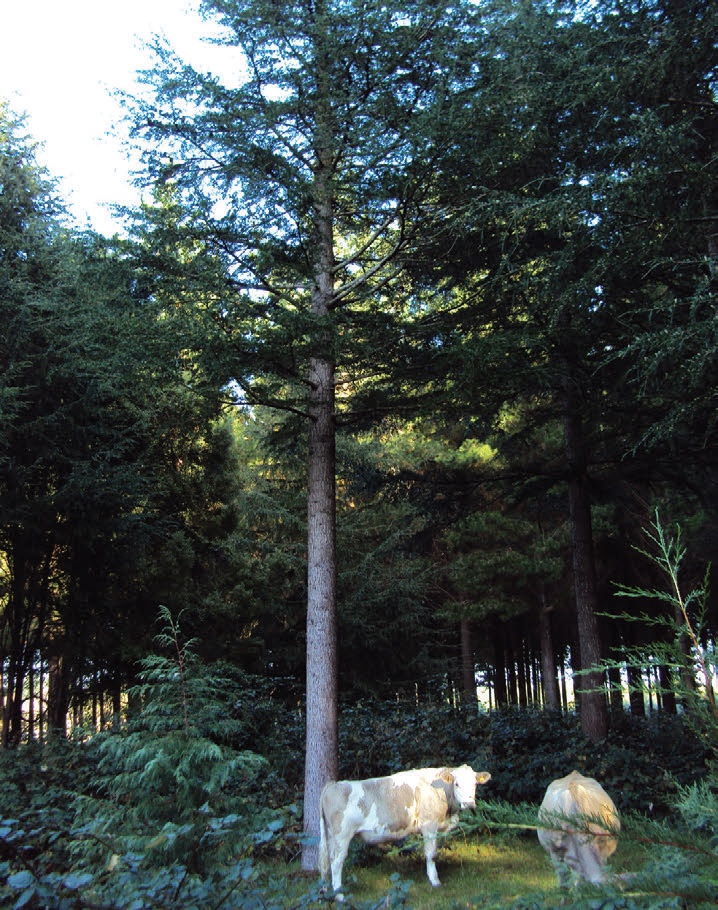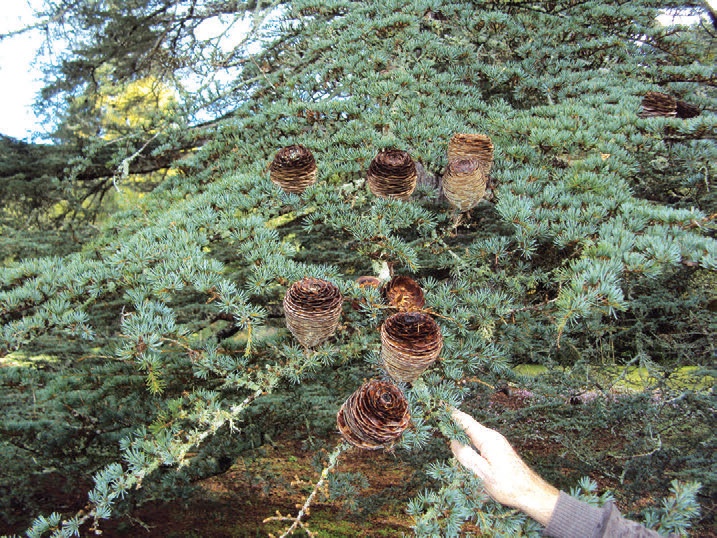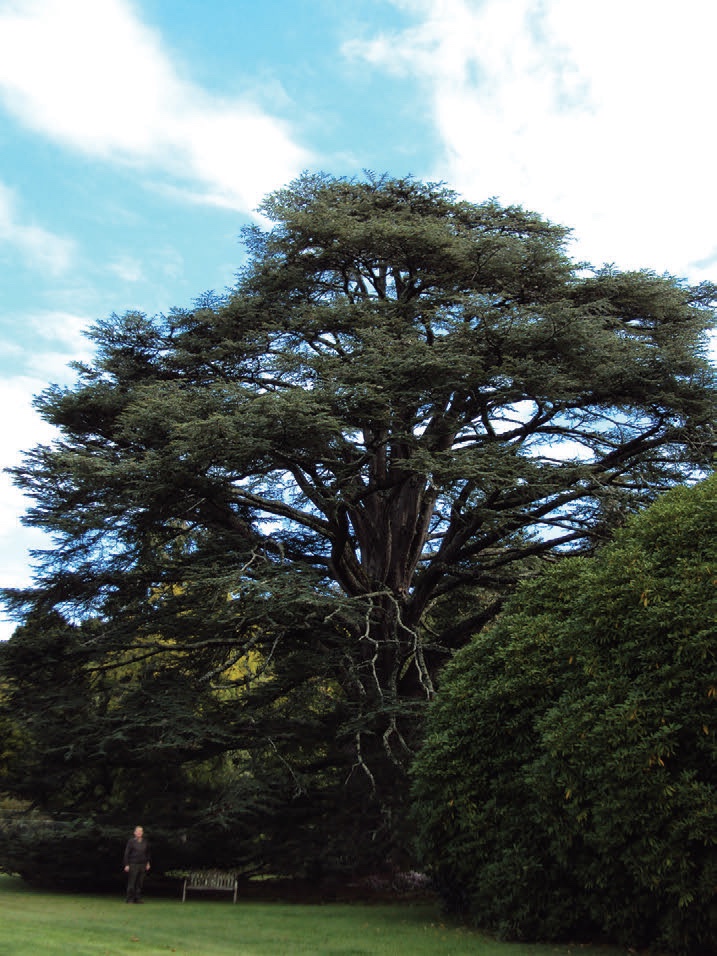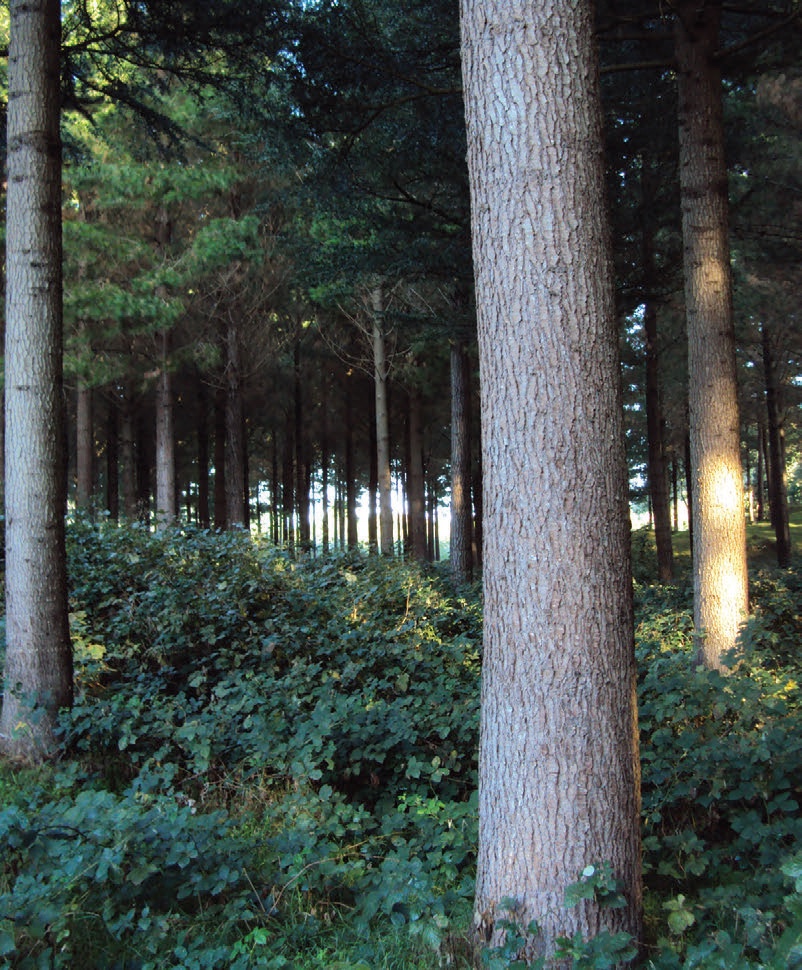The true cedars – a class act
Denis Hocking, New Zealand Tree Grower August 2011.
Cedar engenders mixed emotions for many farm foresters. It is, on the one hand, an over-used moniker for a large number of softwoods, mainly with distinctive smells. But the true cedars – now there is a class act.
These true cedars belong to the genus Cedrus, derived from the Greek kedras, the name for the eastern Mediterranean Cedrus and Juniperus species. Incidentally citrus has the same root – again, all to do with the smell.
Most taxonomists recognise four species of Cedrus. C. deodara has a natural range from the Himalayas of western Nepal through to the Hindu Kush mountains of Afghanistan. C. libani grows in the mountains of Lebanon, Syria and south western Turkey, although the Turkish population is often described as C.libani, sub-sp stenocoma. C. brevifolia occupies a small area of mountain top in Cyprus and C. atlantica is native to the Atlas and Rif mountains of Morocco and Algeria.
Taxonomy and evolution
In their native state all four species are very similar and difficult to distinguish. Do not be fooled by the common C. atlantica being shorter needled and bluish in colour. This is just the ‘glauca’ cultivar and not the form commonly found in North Africa. In all cases the trees are conical when young and become large spreading trees with age, but less so with C. deodara.
Branches do not occur in whorls and the shoots are of two forms. The longer shoots have limited numbers of spirally arranged leaves, and go on to form the architecture of the branches, while short, very slow growing shoots carry most of the leaves in dense clusters. The longer shoots tend to droop characteristically with C. deodara. The leaves are between eight and 60 mm long, longer in C. deodara than the other species, shorter in C. Brevifolia, and relatively long lived at between three and six years.
Height and altitude


The cones are similar to Abies cones, six to 12 cm by three to eight centimetres, and located on top of the branches. They persist for two or three years before breaking up and releasing the seed.
While C. deodara seems to be the tallest, the three major species can all exceed 40 metres in height, with C. brevifolia getting to 30 metres. Similarly, all species can beat 3.5 metres in girth. There are claims they can all live to a great age but there seems to be little evidence for any trees over 1,000 years old.
All species occur at higher altitudes, 1,000 to 2,000 metres for the Mediterranean species and up to 3,200 metres in the Himalayas, so they can withstand cold winters and also dry conditions. The Mediterranean climate is hot dry summers with most precipitation in the winter, a fair bit of it as snow. C. deodara on the other hand is adapted to a summer monsoon rain pattern.
Taxonomy – not the final words
Taxonomists have had plenty to say about the cedars. One school sees only two species with all the Mediterranean populations being sub-species of C. libani. Some looked at the cones and saw a relationship with the firs, others looked at the foliage and saw a relationship with the larches.
However, more recent work suggests the cedars have been around in identifiable form for a long time. Fossilised cedar wood 60 million years old has been found in Kamchatka and genetic analysis suggests that C. deodara and the Mediterranean species diverged around 55 million years ago, C. atlantica and C. libani split around 20 million and C. libani and C. brevistylis a mere 6.5 million years ago. This fits with 40 million-year-old fossil evidence from present day Kazakhstan and progressively younger fossils in Europe and North Africa, but I doubt we have seen the final word.
Considering that the Pinaceae family has a fossil record extending back only 120 to 130 million years, this puts Cedrus well back in the family tree – a basal clade as it is termed. Consider also that 60 million years ago our ancestors were probably rather insignificant rodent like creatures that had recently, in geological terms, seen off the dinosaurs. Therefore the cedars have endured rather than evolved for at least 60 million years, moved around as the continents drifted, seen off the heat of the Eocene and the cold of the ice ages until that pesky little Johnny-come-lately Homo sapiens arrived on the scene as a more serious threat.
Human history
Cedars have featured prominently in recorded history, notably in the Bible. The Phoenicians felled and sold off cedars of Lebanon, notably to the Egyptians who had no worthwhile timber resource. Among other uses, it was much favoured for boat building. Then the Israelites under Solomon, and several other neighbouring tribes, took over, harvesting great swaths of forest for temples and other buildings. However, a number of authorities suggest that much of this cedar was actually Juniperus excelsa.
C. deodara had a comparable reputation further east. Its name is derived from the Sanskrit devadaru meaning ‘wood of the gods’ and the trees and forests were regarded as sacred. But the timber was widely used for temples and boats, including the houseboats of Srinagar. The British used it extensively for their buildings and structures.
C. libani was fashionable in the 18th century as a landscape and dendrological feature of English parks and gardens. C. atlantica and C. deodara joined it in the early 19th century, before North American conifers gained favour.
Planted for amenity

Both C. atlantica and C. deodara are common in New Zealand. C. libani is probably less common and C. brevifolia is rare, although it is in the McKean pinetum, and cutting grown material has been sold by Cedar Lodge Nurseries for a number of years.
The species arrived in the 19th century as part of the British-engineered diaspora, along with quite a few other Himalayan species. There are some notable cedar specimens around, especially in eastern New Zealand. According to Burstall and Sale in Great Trees of New Zealand, the largest C. atlantica was a multi-headed specimen in the Arthur Street reserve, Dunedin which was 22.7 metres high and 225 cm diameter at half a metre above the ground. The best C. deodara was at Wanaka station, and the tallest C. libani near Arrowtown, which was 33.8 metres high with a diameter at breast height of 156 cm.
We have tended to follow the British tradition, planting cedars for amenity rather than timber. Indeed, they are beautiful trees, especially deodara with its lighter green foliage and drooping shoots. They will also handle dry and harsh sites, including my sand dunes, but deodara would have to be the most salt wind shy of any tree I know.
Here it must have shelter, whereas on the eastern side of the island it is a common, and very attractive, shelter species. I gather that Gary Clapperton recently brought in some C. libani stenocoma seed that has performed particularly well with good growth rates and form.
Timber
Despite the historic role and reputation of cedar timber, there seems to have been very little planting of any species for timber outside their natural zones. There were some very early plantings in southern France, a few in Spain and a 1957 British Forestry Commission bulletin mentions a C. atlantica plantation in Sussex and some plantings of C. deodara in southern forests. The growth figures for C. atlantica look quite reasonable, deodar less so, but they seem to have lost favour. Interestingly C. libani, the longest established, does not seem to have been used. I cannot find any mention of plantations elsewhere.
In New Zealand it appears that some farm foresters have planted small blocks and in the 2005 publication Guide to Successful Farm Forestry: A Hawkes Bay Perspective at least 19 farm foresters give favourable reviews emphasising their tolerance of hard, dry sites and exposure but their sensitivity to wet feet and hormone sprays. Please note that second point − cedars are very sensitive to hormone sprays. Only two or three indicated they have plantations.
Better looking than radiata
I recall seeing a stand of deodara at Gwavas forest about 20 years ago, probably established at my father’s instigation but sadly neglected since. My father also planted a very small, tenth of a hectare stand of deodara, in the middle of a larger plantation. At age 46 the 10 remaining trees are all pruned to six metres and average just under 50 cm diameter at breast height and 23 metres in height.

Silviculturally speaking, this is not high productivity but they should be ready for harvest when the surrounding radiata pine finishes its second rotation in about 15 years. However, while they may lose out in the productivity stakes, they are much better looking.
Probably as a result of this lack of interest in plantation cedar, technical information on the wood is very difficult to find. Internet enquiries about wood properties just lead you to cedar wood extracts that supposedly sooth the troubled breast, rejuvenate the skin, cleanse the bowels and cure many other maladies that you did not even know you had. However, there are also reports that the wood dust is carcinogenic.
| Timber | Density at 12 per cent moisture content in kg per cubic metre |
Modulus of rupture Megapascals |
Modulus of elasticity Gigapascals |
|---|---|---|---|
| Radiata pine | 495 | 91 | 9.7 |
| Douglas fir | 480 | 78 | 8.8 |
| Macrocarpa | 475 | 74 | 7.9 |
| Eucalpytus globoidea | 805 | 132 | 14.6 |
| Cedrus deodara | 430 | 65 | 6 |
Dave Cown at Scion did find some figures for deodara and these are shown given in the table. As can be seen, deodara is not a strong timber and unsuitable for structural or load bearing roles such as chairs.
Similarly, I could only find anecdotal information on durability. The Mortimers in Trees for the New Zealand Countryside claim deodara heartwood is durable in the ground. But the general feeling at Scion is that it would probably only be class two or three, comparable to the cypresses, and the historical reputation reflects large dimension timbers in comparatively dry climates. Can anyone provide good evidence to the contrary?
A number of farm foresters report experience sawing cedar timber, and I have sawn a bit myself. Everyone reports easy sawing, very stable timber and light brown heartwood with a pungent aroma. It has been successfully used for internal joinery, doors and notably clothes chests, a traditional use where the smell keeps the moths at bay. The only problem reported seems to be persistent resin bleeding from some of the heartwood, affecting varnish and other coatings.
The future
So do the cedars have a role in New Zealand farm forestry? Well, they certainly have established roles as shelter, shade and amenity trees, especially on the eastern side of the country, but it is difficult to imagine there will ever be great demand for the timber. I am sure there is a possible opening for specialised uses exploiting the insect repellent properties of the wood in clothes chests, and some internal joinery uses.
It would help if we had good data on durability to see whether it really is suitable for exterior and in-ground use. I doubt that it will ever be a popular timber, but it does have the historical mystique. Judging by the internet entries, the biggest potential market would seem to be for cedar wood extracts in the herbal and natural medicine field. There must be a big market out there, although I doubt that I will ever be part of it. In the meantime I will just enjoy the trees. Has anyone got any better suggestions?

 Farm Forestry New Zealand
Farm Forestry New Zealand